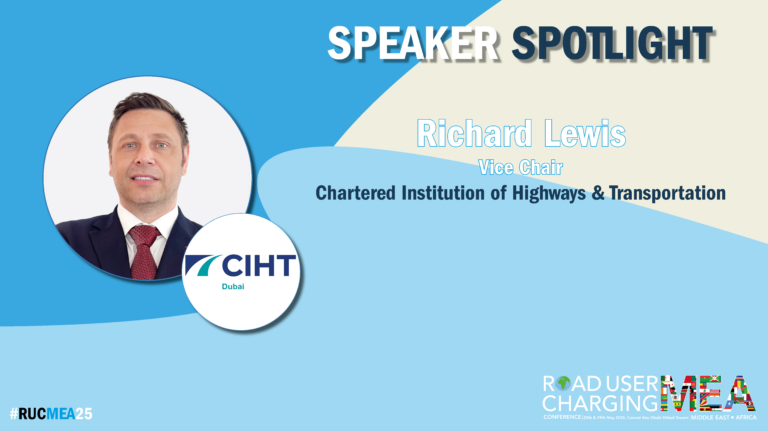 Name: Richard Lewis
Name: Richard Lewis
Job Role: Vice Chair
Organisation: Chartered Institution of Highways & Transportation Dubai
What is the best aspect of your job?
The best thing about my job is the opportunity to contribute to innovative and transformative projects in transport planning. I thrive on the dynamic environment of the Middle East, where new technologies and methodologies are being adopted at an unprecedented pace. Collaborating with a talented team to design solutions that enhance urban mobility and improve quality of life for residents truly energises me.
As vice chair of CIHT Dubai, the most satisfying part of my job is fostering a collaborative environment where professionals can connect, learn, and grow. Helping to guide the branch’s strategic direction and support its members in their career development is a privilege.
What is the biggest challenge facing those with responsibility for user-financed transportation in 2025?
In 2025, the biggest challenge will likely be balancing cost efficiency with user affordability and satisfaction. As pressure mounts to finance transportation networks through user fees, stakeholders must ensure that these costs do not become prohibitive for low-income users while still addressing the need for sustainable funding. Additionally, ensuring transparency and trust in how funds are utilised will be crucial for maintaining public support.
What’s your best piece of advice for those looking to implement user-financed transportation solutions?
My best piece of advice would be to prioritise stakeholder engagement from the outset. Involving the community, transport users, and policymakers in the planning process creates a sense of ownership and can lead to more successful buy-in for user-financed initiatives. Additionally, leveraging data analytics to understand user behaviour can inform pricing strategies and ensure they are equitable and effective.
Does legislation help or hinder development in the sector?
Legislation can serve as both a facilitator and a barrier in the development of user-financed transportation. On one hand, clear regulatory frameworks can provide guidance and stability that encourage investment and innovation.
On the other hand, overly restrictive regulations may stifle creativity and slow the implementation of necessary infrastructure improvements. Finding the right balance is essential for fostering a supportive environment for growth.
How will the business of user-financed transportation have changed by 2030?
By 2030, I anticipate that the landscape of user-financed transportation will be significantly shaped by technological advancements and evolving user preferences. We may see increased integration of dynamic pricing models as with ERP in Singapore and the recently implemented dynamic pricing for SALIK and Parking in Dubai, where fees reflect real-time demand and congestion levels.
Additionally, smart technologies will likely improve the efficiency of collecting user fees, making systems more user-friendly and transparent, ultimately leading to enhanced user satisfaction and trust.
Why are you looking forward to speaking at Road User Charging Conference 2025?
I am looking forward to speaking at the Road User Charging Conference MEA 2025 because it provides a unique platform to share insights and collaborate with industry leaders and policymakers from across the region.
Engaging in discussions about innovative charging solutions and learning from successful implementations will be invaluable as we navigate the complexities of user-financed transportation. Moreover, this conference offers an opportunity to influence the discourse on sustainable mobility in our rapidly evolving cities.


 Name: Richard Lewis
Name: Richard Lewis Discover the key trends and challenges shaping the future of user-financed transportation –spanning tolling, pricing and road usage charging – at Akabo Media’s
Discover the key trends and challenges shaping the future of user-financed transportation –spanning tolling, pricing and road usage charging – at Akabo Media’s 


